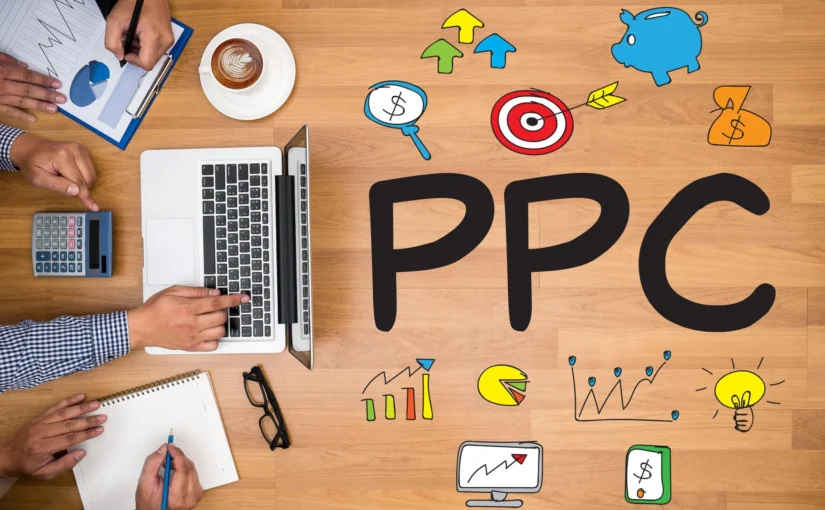How Your Local SEM Can Help Motorcycle Injury Lawyers Get Local Clients in Detroit, MI
Detroit, MI, with its vast network of roads and a vibrant motorcycle culture, sees a significant number of motorcycle-related accidents. How to Get Local Clients? For lawyers specializing in motorcycle injury cases, standing out in this competitive market requires a targeted and strategic approach. Local Search Engine Marketing (Local SEM) can be the key to effectively reaching and converting motorcycle injury clients in Detroit. Here’s how.
1. Leverage Detroit-Specific Keywords with High Intent
Motorcycle accidents often result in serious injuries, leading victims to seek legal assistance quickly. To capture this urgency, it’s crucial to use Detroit-specific keywords. These keywords should reflect the local context. They should also indicate the high intent of searchers. Avoid using general terms like “motorcycle accident lawyer.” Focus on phrases such as “Detroit motorcycle injury attorney” or “lawyer for motorcycle crash in Wayne County.” These can better connect with potential clients.
Optimize your SEM campaigns with these targeted keywords. This strategy ensures your ads appear in front of individuals actively searching for legal help in Detroit. This strategy targets your audience effectively. Additionally, this approach reduces competition with broader, more generic terms, making your campaigns more cost-effective.
2. Geo-Targeting Specific Detroit Neighborhoods and High-Risk Areas
Detroit has areas with higher traffic and accident rates, such as the Lodge Freeway, Jefferson Avenue, and Woodward Avenue. Implement geo-targeting in your SEM campaigns. This helps focus your efforts on high-risk areas. Motorcycle accidents are more likely to occur in these places.
For instance, targeting ads around popular motorcycle routes or accident hotspots can help you reach victims immediately after an incident. Ads like “Injured on the Lodge Freeway? Get Legal Help Now” can resonate with those in need of urgent assistance. This localized approach ensures that your marketing budget is spent efficiently, reaching those most likely to convert.
3. Use Mobile Ads for On-the-Go Motorcycle Riders
Motorcycle riders are often on the move, making mobile advertising an essential component of your SEM strategy. Create mobile-specific ads that are easy to engage with on a smartphone. This way, you can connect with potential clients who are most active.
For example, mobile ads featuring click-to-call buttons, like “Injured in a Motorcycle Crash? Call 855-515-5544 Now for Immediate Help,” make it simple for accident victims to reach out directly from their phones. This immediacy can significantly increase the chances of converting a lead into a client.
4. Incorporate Localized Content Marketing and SEO
Content marketing that addresses specific concerns of Detroit motorcycle riders can boost both your organic and paid SEM efforts. Create blog posts, guides, or videos that cover common motorcycle accident scenarios in Detroit. Examples include navigating dangerous intersections or dealing with uninsured drivers. This content can establish your firm as a local authority.
A blog titled “What to Do After a Motorcycle Accident on Woodward Avenue” can rank well for local searches. For instance, this content can also be used in SEM campaigns to drive targeted traffic. This content not only improves your organic rankings. It can also be featured in your SEM ads. This provides additional value to potential clients.
5. Highlight Local Success Stories and Client Testimonials
In a city like Detroit, where word-of-mouth and local reputation carry weight, showcasing success stories is important. Sharing testimonials from local clients can set you apart. Incorporate these testimonials into your SEM campaigns to build trust and credibility with potential clients.
For example, an ad could say, “Helped 100+ Detroit Riders Get Justice – Call 855-515-5544 Today!” This not only demonstrates your success. It also creates a personal connection with the local community. This makes it more likely that potential clients will choose your services.
6. Offer Free Case Evaluations with a Local Focus
Free case evaluations attract potential clients. They are especially effective if you emphasize your expertise in Detroit motorcycle injury cases. Your SEM ads can highlight this offer with a local focus, such as “Detroit Motorcycle Crash? Get a Free Case Evaluation Now!”
Local SEM Services are an essential part of any business’s marketing strategy. They ensure that your business is easily found by potential customers in your local area.
This approach reduces the barrier to entry for potential clients and positions you as an approachable, knowledgeable resource. Emphasizing your local expertise reassures clients that you understand the specific legal and logistical challenges of motorcycle accidents in Detroit.
7. Implement Retargeting to Stay Top of Mind
Not every potential client will contact you after their first interaction with your ad. Retargeting campaigns allow you to stay top-of-mind for those who have previously visited your website. These campaigns target individuals who clicked on your ad but didn’t convert.
By targeting local customers, businesses can increase their visibility in local search results. This approach ensures they are easily found by potential clients searching for relevant products or services.
For example, if someone in Detroit visits your site but doesn’t fill out a contact form, use retargeting ads. These ads can remind them to reach out. Messages like “Still Need Legal Help After Your Motorcycle Accident? Call 855-515-5544 Today” can nudge them towards making that crucial call.
Conclusion
In Detroit, MI, motorcycle culture is strong. Accidents are unfortunately common. A well-executed Local SEM strategy can make all the difference for injury lawyers looking to attract local clients. Focus on Detroit-specific keywords. Leverage geo-targeting. Incorporate mobile-friendly and localized content to effectively reach and convert motorcycle injury victims in this competitive market.
Your Local SEM efforts should focus on visibility. Additionally, create a strong connection with potential clients by emphasizing your local expertise and success. With these strategies, you can ensure your firm is the first one Detroit riders call when they need legal help.




